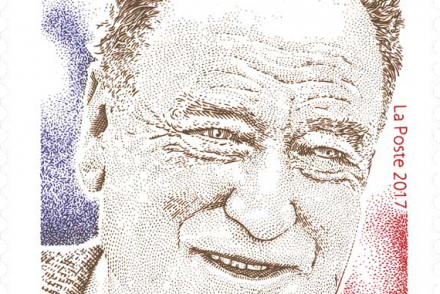Swarovski Crystal
Austria – What would Christmas be without Christmas decorations, without the ornaments and decorations which we associate with this Christian festival Bright stars and snowflakes, with their delicate shapes, are among the most popular symbols of winter and the feast of Christmas, and the ones on this Christmas stamp are particularly fine, decorated with a genuine, sparkling Swarovski crystal. A deep blue sky and glittering snowflakes, dancing through the air like little stars: that is how we picture a delightful snow-covered winter landscape. Even if nowadays a white Christmas cannot be taken for granted even in Alpine areas, every year we still hope for a winter wonderland with snowflakes and a clear blue sky, just like the one shown on the Christmas stamp.
The stars and snowflakes on the commemorative stamp are designs from the traditional ?Christmas ornament? range, for which Swarovski issues a new glittering crystal ornament in the shape of a star or a snowflake every year. In this way Swarovski ornaments have brought a festive gleam to the holidays for over 25 years, whether as decorations on the Christmas tree or as a decorative gift tag. This Christmas stamp is made especially radiant by the glittering crystal that adorns one of the Christmas decorations. It sparkles in an especially magical way as it has been refined with the Aurora Borealis effect and, as a result, glitters in all the colours of the rainbow, reminding us of the iridescent beauty of the Northern lights to which this fascinating effect owes its name. The Aurora Borealis effect was first revealed to the international public in 1956 and to this day it still exudes timeless elegance.
Swarovski crystals are famous for their exceptional radiance. The traditional Tyrolean company has been making jewellery, fashion accessories, figurines and much more for over 120 years. In the 1910s a proprietary glassworks was founded to ensure the supply of raw materials. From the very start, Daniel Swarovski, who founded the company in 1895, strove to drive technical progress forwards and to continuously improve the brilliance and purity of the crystals, although the production processes used by Swarovski Kristall remain a closely guarded secret to this day. A leading company in the production of abrasive materials also emerged under the name Tyrolit, whilst the Swarovski Optik branch of the company deals with binoculars, telescopic sights and telescopes. The Swarovski Kristallwelten in Wattens, Tyrol, where renowned artists have combined millions of sparkling elements into a complete work of art in a setting designed by André Heller, are famous throughout the world.




